Companion planting is the practice of growing different types of plants together to benefit each type of plant. By planting certain plants together, they can help each other grow and thrive, discouraging pests and improving the flavor of the crops.
One of the more common methods is “Three Sisters”.
In this article, we will focus on basil companion plants. We’ll explore the different types of plants that can be grown alongside basil to improve their overall growth and health.
Whether you’re an experienced gardener or just starting, learning about basil companion plants can help create a thriving and healthy garden.
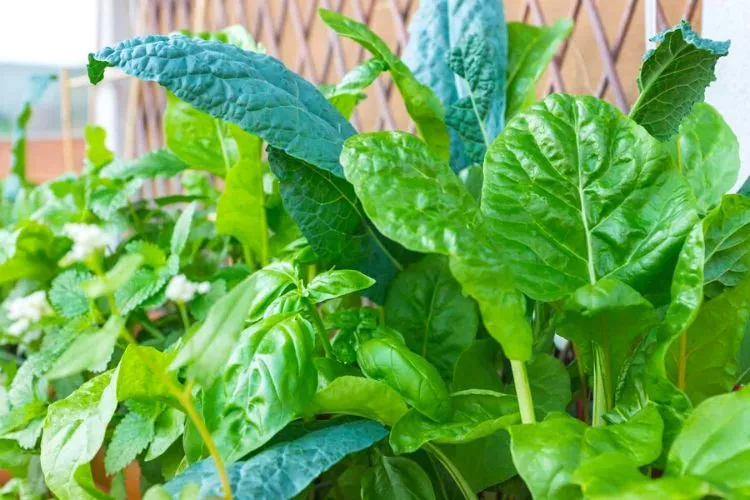
Table of Contents
Best Basil Companion Plants (The Ultimate List)
Basil is an extremely versatile and popular herb that can be grown alongside various plants. Some of the best buddy plants for basil include:
- Tomatoes – Surprisingly, planting basil and tomatoes together can improve the flavor and yield of both crops. Basil can repel pests like aphids and spider mites, which can damage tomato plants.
- Peppers – Basil and peppers are warm-season crops that thrive in similar growing conditions. Growing these plants together can help attract pollinators to the garden and improve crop yield. More pollinators mean a bigger, more abundant garden!
- Mint – Mint is a good companion plant for basil because it helps to repel pests and improve the flavor of the basil. Mint also likes similar growing conditions and can help keep the soil moist.
- Parsley – Parsley is a cool-season herb that is a good basil buddy. Planting parsley alongside basil can help attract beneficial insects like hoverflies and ladybugs to the garden.
- Marigolds – Marigolds are another popular companion plant for basil as they can help repel pests like nematodes. They also improve the overall flavor of the herb. Marigolds are best planted around the garden’s border or between rows of basil.
By growing these plants alongside basil, you can vastly improve the health and yield of your crops. Basil buddy plants can help repel pests, attract beneficial insects, and improve the herb’s flavor.
Companion Planting with Basil and Tomatoes
Basil and tomatoes are one of, if not the best, “classic” combinations in the garden and kitchen. Planting these two crops together can have a range of benefits, including:
- Improved flavor: Basil and tomatoes have an unspoken natural connection to each other and can enhance each other’s flavor when grown together.
- Pest control: Basil has natural pest-repellent properties that help keep cheeky buggers like aphids and hornworms away from your tomato plants.
- Increased yield: Studies have shown that growing basil and tomatoes together can increase the yield of both crops.
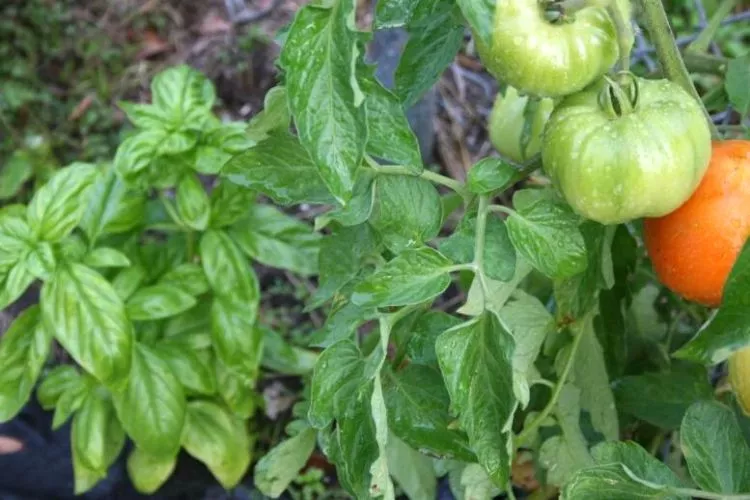
Let’s have a look at some tips on how to plant basil and tomatoes together:
- Choose a sunny location: Both basil and tomatoes need full sun to thrive, so choose a spot in your garden that gets at least 6-7 hours of direct sunlight daily.
- Plant them close together: Plant your basil and tomato plants right near each other, but ensure they aren’t touching. This way, they’ll share nutrients and create a microclimate that helps them thrive.
- Provide support: Both basil and tomatoes need extra support to grow tall and strong. So, be sure to provide stakes or cages for them to attach to and use to climb. They can also benefit from each other by using the same support method to keep them upright.
Other buddy plants that work well with tomatoes include:
- Marigolds
- Nasturtiums
- Carrots
- Onions
- Garlic
You’ll create a healthy, thriving, beautiful, and productive garden by planting these types of plants alongside your basil and tomato. It’s a win-win!
Herbs that Make Good Companion Plants for Basil
Basil is an extremely versatile herb that is used in a wide variety of dishes, from Italian to Thai cuisine. Regarding companion planting, it’s not only the vegetables that thrive on the Basils’ assistance.
Several herb species can also grow well with basil and can even help enhance their flavor and growth. Here are some examples of herbs that make good buddy plants for basil:
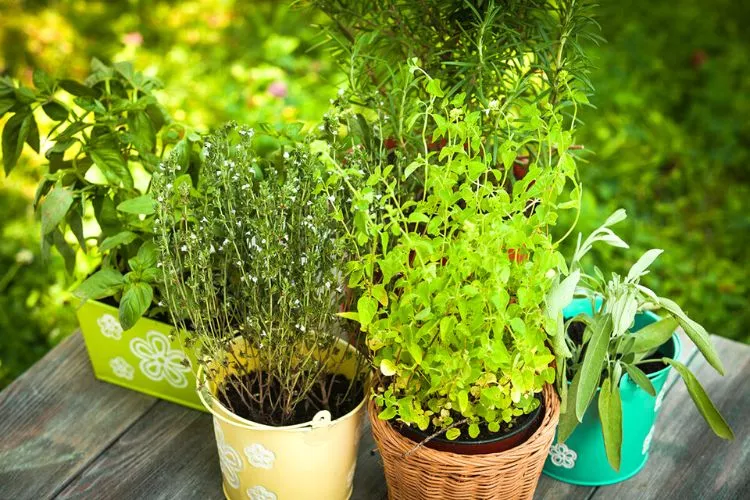
- Mint: Mint is a fast-growing herb that can help repel pests like aphids and whiteflies, which love to latch on to basil. It also has a refreshing aroma that can complement basil’s sweet and spicy flavor.
- Rosemary: Rosemary is a hardy herb that can help deter pests like cabbage moths and bean beetles; again, basil suffers at the hands of these. It also has a strong aroma and flavor that can enhance the flavor of basil in dishes like tomato sauce and roasted vegetables. Who would have thought?
- Thyme: Thyme is a low-growing herb that can help improve soil quality and deter pests like slugs and snails. It’s also got these subtle and earthy flavors that can complement the bold flavor of basil.
- Sage: Sage is another pest repellent, in this case, carrot flies and cabbage moths. It has an intense but slightly bitter flavor that complements basil’s sweet and spicy flavor.
By planting any of these herbs alongside your basil plants, you can have the perfect opportunity to create a healthy and diverse, beautiful, and productive garden.
The beauty of these herbs is that they can also be used in various dishes alongside basil to create some pretty, unique, and delightful flavor profiles.
Other Companion Plants for Basil
In addition to vegetables and herbs, several other plants make great companion plants for basil. Here are some examples:
Flowers
- Marigolds: These colorful flowers are known for repelling pests such as aphids and whiteflies.
- Nasturtiums: Not only do these flowers add a funky little pop of color to your garden, but they also attract beneficial insects that prey on pests.
Fruits
- Strawberries: These sweet berries are a great companion for basil, and both plants can thrive when planted with similar growing conditions.
- Blueberries: Like strawberries, blueberries can also grow well with basil and make a tasty addition to your garden.
When choosing buddy plants for basil, it’s important to consider their needs and compatibility. While these plants are generally considered good companions for basil, it’s always worth researching each plant’s specific needs to ensure they can actually thrive together.
Bad Companion Plants for Basil
While many plants make great companions for basil, some should be avoided. Here are some examples of companion plants that just don’t match the needs of basil:
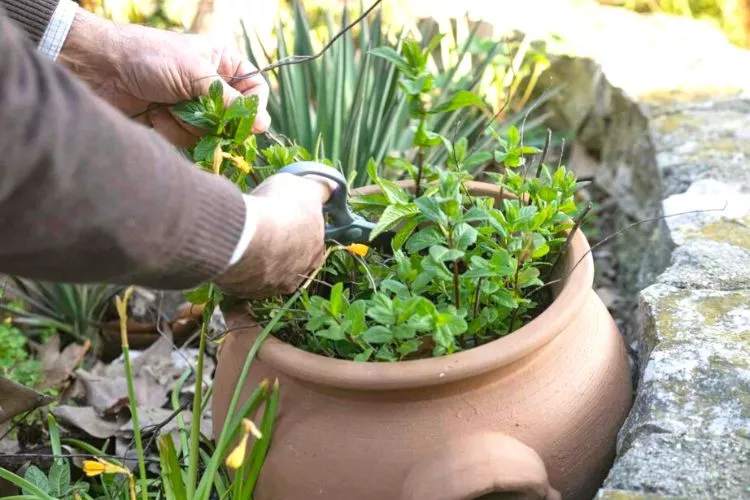
- Cucumbers: Cucumbers and basil have different soil and water requirements, which can lead to stunted growth, root rot, and just poor yields for both plants.
- Rue: Rue contains chemicals that can inhibit the growth of other plants, including basil. Avoid at all costs.
- Anise: Anise can attract pests such as aphids, damaging both the anise and basil plants. A duo to keep separate!
To avoid planting bad buddy plant combos with basil, it’s important to do your research and plan your garden carefully. Consider the needs of each plant.
This can include their respective soil types as well as water requirements. Make sure to choose other pairing plants that have similar needs to basil. Additionally, rotating your crops can help prevent soil-borne diseases and ensure the long-term health of your basil plants.
How close to plant companion plants for basil?
When planting these types of plant pairs, it’s generally recommended to space them close together but not so close that they’re competing for resources or overcrowding each other. They become a humidity trap when forced to leaf out next to each other.
A good rule of thumb is to plant companion plants within a foot of each other, sometimes even slightly closer.
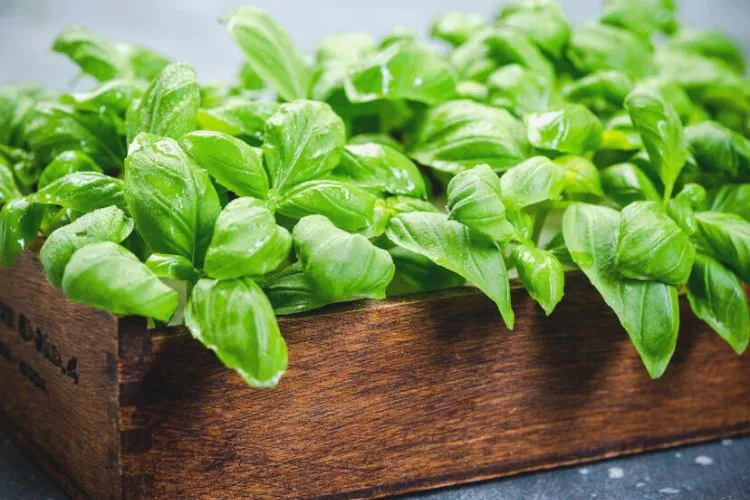
It all depends on the type of plants and their growing habits. Some simply bush out more or grow taller than others, which should be noted when planning.
It’s important to do some research and consider the specific needs of each plant. This will ensure they’re compatible and won’t harm each other’s growth.
Where should I plant basil in my garden?
When considering where to plant basil in your garden, you should first look at each of the specific needs of this herb. Basil thrives in warm weather and requires plenty of sunlight, so choosing a spot that receives at least 6-7 hours of direct sunlight each day is best.
A bit of respite should be allowed in the later stages of the day when the heat can be more intense.
Additionally, basil prefers well-drained soil that is rich in nutrients. So it’s worth considering adding some compost or organic matter to amend the soil before planting.
Basil can be grown successfully in the ground or in containers. When planting in the ground, it is important to ensure the soil is well-drained and that the planting site is not in an area prone to flooding or stagnating water.
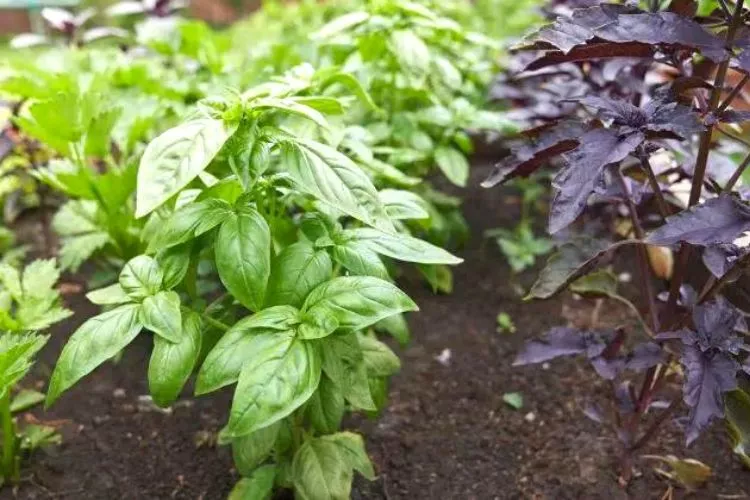
When planting in containers, go for a pot at least 6-8 inches deep and wide enough to accommodate the size of the mature basil plant. Use a high-quality potting mix rich in nutrients as they really need them, especially in the early stages of growth.
Basil can be planted as either seeds or transplants, and the best time to plant usually depends on your location and climate. In most regions, basil can be planted in the spring after the last frost date or even closer to the summer.
When planting basil, be sure to space them 8-12 inches apart to allow for adequate air circulation and prevent overcrowding. Water the plants regularly and aim to keep the soil moist but not soaking.
Consider using a round, balanced fertilizer like a 10-10-10 or a 4-4-4 to promote healthy growth.
Remember that basil can benefit from planting near other herbs and vegetables, such as tomatoes, peppers, and oregano. These plants can not only help to repel pests but also provide additional nutrients to the soil.
However, it is extremely important to avoid trying to grow your basil near plants such as fennel or rue, which can harm the growth and flavor of the herb.
Overall, by providing proper care and maintenance, you can enjoy a bountiful harvest of delicious and fragrant basil whenever you like. They can even be stored for later use if you simply take the time to prepare them.
Frequently Asked Questions (FAQs)
Are there any shrubs that make good companion plants for basil?
Yes, some shrub species make good companion plants for basil. For instance, rosemary helps by repelling pests and adds a savory flavor to the soil. Additionally, lavender and oregano can also be planted with the basil to improve their growth and flavor.
Are there any trees that work as companion plants for basil?
Yes, a few trees can work as buddy plants for basil. Fruit trees, such as apple and cherry trees, are great options as they can help to attract beneficial insects and provide shade. However, choosing trees with a shallow root system is important to avoid competing for nutrients.
What are some Thai basil companion plants?
Thai basil grows well with herbs such as lemongrass, cilantro, and mint. It also enjoys the company of tomatoes, peppers, and eggplants. These buddy plants can help by keeping pests away, amending the health of the soil, and enhancing the flavor of the surrounding herbs and vegetables.
What are some holy basil companion plants?
Good companion plants for holy basil include marigold, chamomile, and fennel, which can help repel pests and attract beneficial insects. Other herbs, such as mint, thyme, and oregano, can grow well with holy basil.
Conclusion:
In conclusion, planting basil with companion plants offers many benefits, including improved flavor, pest control, and increased yield. With various herbs, vegetables, and flowers, gardeners can find the perfect companions for their basil plants.
On the other hand, avoid planting bad neighbors, such as fennel and rue, to ensure a successful garden. So, give these basil companion plants a try and enjoy the many benefits it has to offer.
We hope that this guide has been helpful. You can read about similar topics here on our website. Check back again soon for more.


